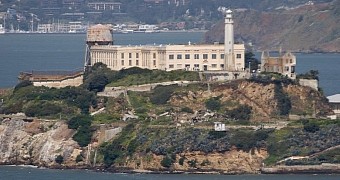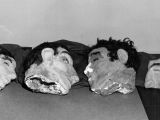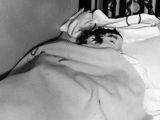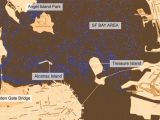On June 11, 1962, three prisoners somehow managed to escape from the Alcatraz Federal Penitentiary, a high-security prison that operated from 1934 until 1963 on the island of Alcatraz, off the coast of the city of San Francisco in California, US.
The escapees, identified as Clarence Anglin, John Anglin and Frank Morris, simply vanished into the night and were never seen again, be it alive or dead. Although the prisoners broke free from Alcatraz decades ago, it's still unclear what happened to them after they left the island.
Thus, some say that they perished in the waters off the San Francisco Bay not long after leaving the island on a raft. Others are quite convinced that, although the odds were not exactly in their favor, the escapees survived the experience and made it to land alive.
How the tree prisoners escaped Alcatraz
Information shared with the public by the Federal Bureau of Investigation (the FBI, for short) says that, on the night of the escape, bank robbers Clarence Anglin, John Anglin and Frank Morris placed dummies made of soap, toilet paper and hair in their beds, and crawled out of prison through a tunnel.
The tunnel in question, which the inmates spent some 6 months digging using sharpened spoons as tools, helped them get to the water's edge. Once here, they cozied up together on an inflatable raft made out of their our raincoats and ventured into the San Francisco Bay.
It is believed that the three escapees made it in the waters off the San Francisco Bay sometime between 8 p.m and 2 a.m. the following day. Whether or not they managed to get to shore alive remains a mystery. Seeing how their bodies were never found, it is possible that they survived.
Researchers say they might have made it to land
In a recent report, scientists with Delft University and the Deltares research institute in the Netherlands detail how, while studying the San Francisco Bay to determine how sea level rise is bound to affect this region, they found evidence that the bank robbers could have actually made it to land.
Thus, they say that, with the help of a computer model that served to analyze data concerning local tidal movements on the night of the escape, they found that, had they left the island of Alcatraz around midnight and had they paddled north, the prisoners might have made it to land, not far from the Golden Gate Bridge.
“The simulations show that if the prisoners had left before 23:00, they would have had absolutely no chance of surviving. The strong currents would have taken them out to sea,” researcher and hydraulic engineer Fedor Baart said in a statement.
“However, if they left between 23:00 and midnight, there is a good chance they reached Horseshoe Bay north of the Golden Gate Bridge,” the Delft University specialist went on to comment on the outcome of this investigation into the 1962 escape from Alcatraz.
According to Fedor Baart and his colleagues, Clarence Anglin, John Anglin and Frank Morris would have also perished, had they left the island after midnight. Thus, the tides would have made it impossible for them to reach shore and they would have eventually died of hypothermia.
The researchers go on to detail that, had the prisoners made it north of the Golden Gate Bridge, debris from their raft would have then been carried back into the bay. This means that the model is in accordance with the discovery of a paddle and some personal belonging towards Angel Island.

 14 DAY TRIAL //
14 DAY TRIAL // 



